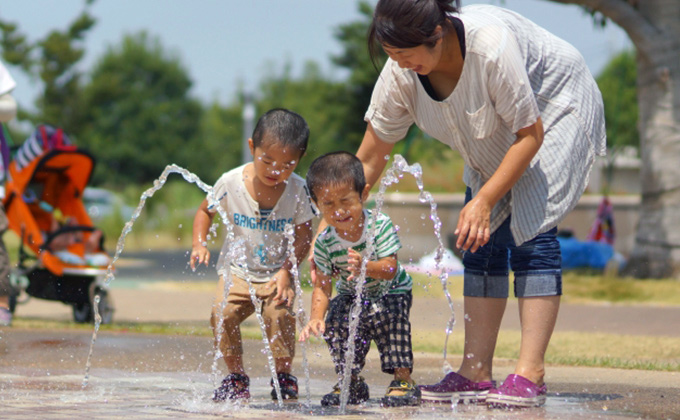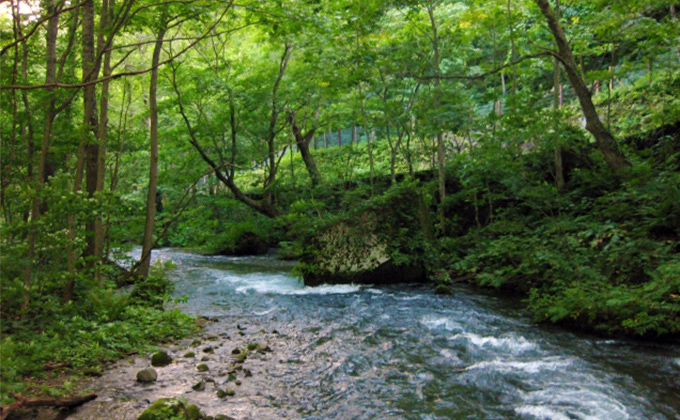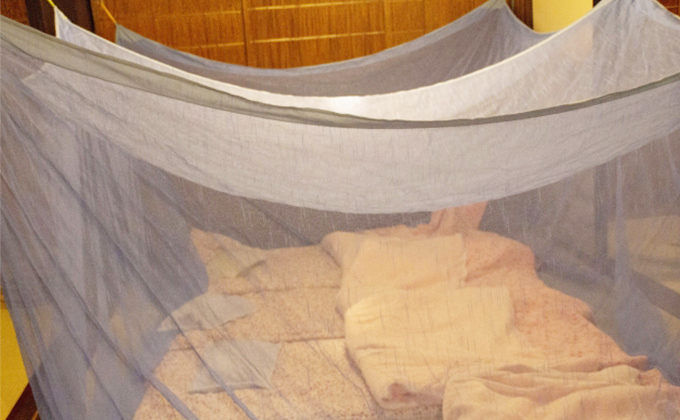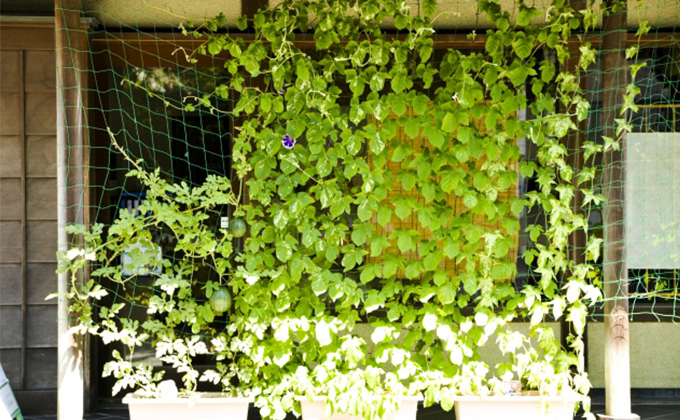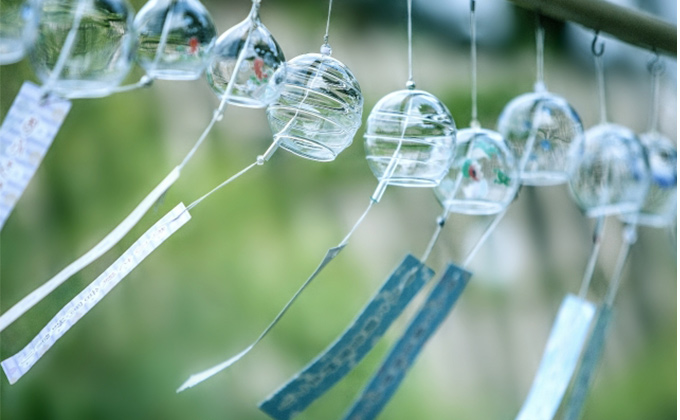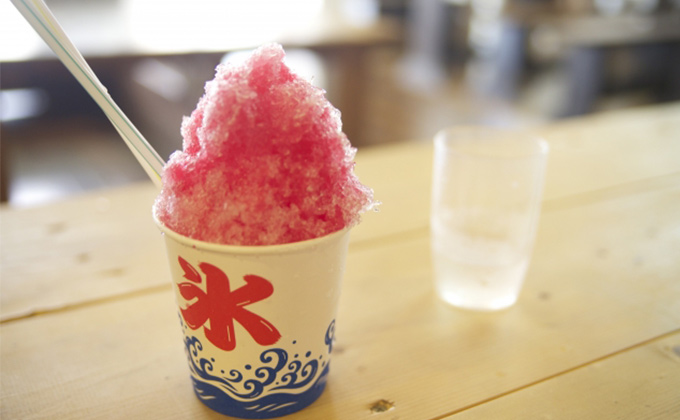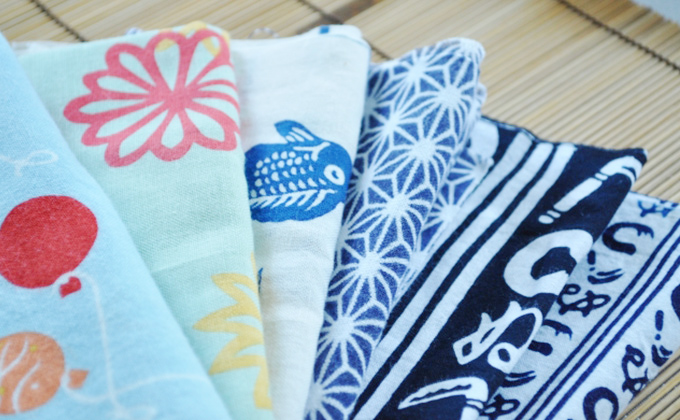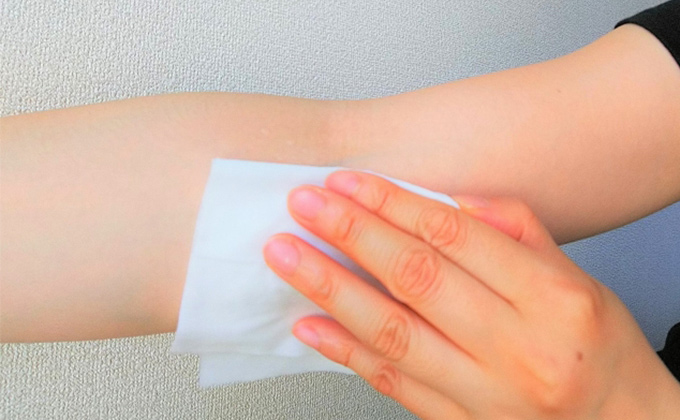TRG Info and Advice
Gearing Up for Summer in Japan, Part 1 Country vs City
My first summer in Japan I thought I’d die! I lived in a stifling apartment with no air-conditioning and limited cross-breeze options. I developed strange rashes (heat-rash, impetigo, etc.) on my inner elbows, the backs of my knees, even on my wrists of all places!
The only place to find relief for part of each day was studying kanji in the library, wading in cool mountain streams, or biking to the beach once the sun hung low in the west, then diving into the ocean. Cool cafés that served sweet iced mattcha lattes and coffee jelly were also a godsend during that first shockingly humid summer.
In the twenty years since then, I have discovered a few more tricks for surviving Japan’s Season of the Sauna!
Escape to the Countryside
Free and natural options for keeping cool abound in the Japanese countryside. Go hiking (mountaintops are cooler in more ways than the view!), explore ancient forests (think shade, shade and more shade!), or pretend to be Katniss by catching fish with your hands in a mountain stream (keeping your hands and feet in those chilly waters will definitely cool you off!).
Try to stay in an old farmhouse or a traditional inn. These been-there-withstood-that buildings are designed especially with summer in mind. With foundations that are 25-30 centimeters off the ground, it’s like having a built-in cooler right under you! Sliding doors between rooms can be opened, closed, removed or relocated to find optimum cross-breezes. Large roofs with deep eaves also provide additional shade-spots.
If you have a choice, take the room in the northeast corner of the house. Request and suspend a fine mosquito-net tent (called a ka-ya) so that you don’t have to worry about those tiny bugs that can slip through the screens (and the larger ones that sometimes fall from the beams), because you are going to want those windows wide open! If there are curtains, keep the ones in rooms that get lots of sun closed during the day.
Speaking of curtains, you may notice many locals rigging climbing vines on the southern sides of their homes to make a green curtain of coolness. Asagao (morning glories), hechima (a kind of sponge gourd that your bath time loofahs are made of), and hyoutan (another type of gourd) all grow quickly without much maintenance required, and provide lovely, eco-friendly shade during the summer months.
Another eco-friendly trick is to put a bowl of ice-water in front of your fan to give your breeze a little kick. Try sleeping with a pillow that you’ve kept in the freezer all day; it’s extremely refreshing. Sheets spritzed with a little ice water before bed will also give you a reprieve.
For a mental strategy that works anywhere, try purchasing a fuurin Japanese wind chime. The fuurin has been around for ages, and can be found in a plethora of shapes, colors and sizes. Just the tinkling sound of these summer ornaments is said to have a cooling effect.
The last thing you might want to do when it is sweltering outside is get into a hot bath, but the Japanese swear by the relaxing effects of bathing, and summer is no exception! In my family, we have two baths (remodeling blunder, don’t ask!) so we fill one with hot water and one with cold water from our underground well. After washing, we soak in the hot bath, then immerse ourselves in the cold (I can only get in up to my thighs, but my kids will put their heads under!). Repeating this process seven to ten times was recommended to me by my acupuncturist friend as being good for your circulation. I find, also, that it cools me down to my core, ensuring a better night’s sleep.
Many onsen (hot spring spas) have a mizuburo (cold bath) counterpart for this very reason, so, don’t be shy and take the plunge!
For those who have limited time, there are still options for naturally keeping cool around Tokyo. For example, you can climb Mt. Fujii from July to September, and there are many tour and camping options available for any kind of trip. Check out the Official Website for Climbing Mt. Fujii, complete with volcanic activity alerts, for more information.
http://www.fujisan-climb.jp/en/
These websites outline a few more day-trip options from Tokyo for hiking, camping, beach bathing and surfing. Ending your day with a soak in a hot spring bath will not only cleanse and refresh you for the next adventure, you’ll also get to cross “soaking in a pool of green tea” off your bucket list.
https://www.timeout.com/tokyo/travel/best-day-trips-from-tokyo
If You Just Can’t Leave the City!
Find a way to mooch the air-con! Window shop or people-watch while eating ice cream or kakigori (shaved ice/snowcones) at a mall or department store. Find a quiet corner in a library to read or listen to music (use headphones, of course!). Visit one of the many interesting and unique museums in Tokyo. Spending some of the hottest hours of each day enjoying air-conditioning that is being paid for by someone else is a trick that has been perfected by city-dwellers for years!
This article highlights museums with a little something for everyone in the family or group! https://livejapan.com/en/article-a0001710/
Some museums are free or offer discounts on certain days!
https://www.timeout.com/tokyo/museums/free-museum-days-at-tokyo-museums
Of course, you’ll have to walk between buildings, and up and down the subway steps, so here are a couple of tips for freshening up upon your arrival, and staying cool along the way as well.
1. Tenugui
These light, colorful and traditional Japanese towels have a plethora of uses, but my collection really goes to bat for me in the summer when I sling a slightly damp one around my neck whenever I go outside. It can also double as hairband to keep sweaty locks off of your face. Once your tenugui has dried, just run it under a sink, wring it out and return it to your neck. If this doesn’t sound good to you, just having a dry one around your neck works, too. These lovely towels give you something to dab your brow with and are good for drying your hands after using a paper towel-less public restroom. They also make great souvenirs. Check out the variety of patterns and ideas for use at a tenugui specialty shop in Shinjuku https://matcha-jp.com/en/1343.
2. Summer Clothes Invest in a few choice summer pieces of clothing. Uniqlo and other shops offer a product called “cool biz” for undergarments. Loose-fitting tops and bottoms are also a good idea, to allow any potential breezes to pass through. You’ll see many locals wearing light, long-sleeved shirts or thin cardigans to protect themselves from the sun. An extra layer is also good to have when going into air-conditioned restaurants, museums and subways that can get chilly. If you are planning to stay and work in Japan, you may want to invest in some professional wear especially meant for the humid summer months.
3. Hats A good summer hat, whether it be the sporty, outdoorsy, or whimsical straw kind is a must. One that folds easily when you go indoors is a plus!
4. Summer Umbrella For those who don’t want to mess up their hairstyle, these are an excellent option. Their shade is also more ample than a hat and can even be shared.
5. Body Sheets Once you’ve arrived at your destination, take a quick bathroom break and wipe yourself down with a “body sheet.” Sold at any convenience or drugstore, these tingly, over-sized wet wipes come in a variety of scents and strengths. If you wear make-up, you might also want some blotting papers to mop up your brow and upper lip. You’ll feel refreshed and ready to enjoy whatever is next on the agenda.
6. Fans Whether it’s the free flat uchiwa you got with your donuts, or the elegant folding sensu that you bought to go with your outfit, a manual fan will provide you with a much needed breeze whenever and wherever!
7. Salt Candy What? “I’m not a cow,” you might be thinking, but trust me, you will sweat, losing valuable minerals. Popping a salt-candy (sold in abundance in any grocery or convenience store during the summer) into your mouth can replenish them and get you back into the action ASAP.
NOTE: Those traveling with small children will probably have a stroller with a sun/rain shade. Although it is always improving, many places in Tokyo are still awkward to access on wheels. Holding your child in a sling or carrier will make you more mobile, but will most likely make a sweaty mess of both of you, so having a thin towel in between you, to absorb the inevitable moisture created by your body heat, is recommended. Many department stores and museums provide a free or rental stroller service within the building, to give you both a break, so be sure to inquire if you are interested.
For Part 2 of this article, please click here.






